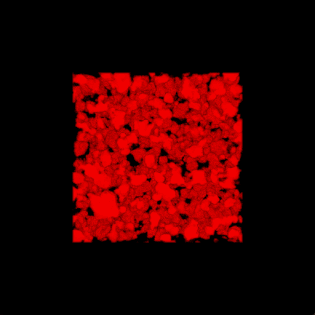Quebec’s Institut national de la recherche scientifique (INRS) announced an environmentally friendly way of cleaning up oil spills in an April 9, 2018 news item on ScienceDaily,
From pipelines to tankers, oil spills and their impact on the environment are a source of concern. These disasters occur on a regular basis, leading to messy decontamination challenges that require massive investments of time and resources. But however widespread and serious the damage may be, the solution could be microscopic — Alcanivorax borkumensis — a bacterium that feeds on hydrocarbons. Professor Satinder Kaur Brar and her team at INRS have conducted laboratory tests that show the effectiveness of enzymes produced by the bacterium in degrading petroleum products in soil and water. Their results offer hope for a simple, effective, and eco-friendly method of decontaminating water and soil at oil sites.
An April 8, 2018 INRS news release by Stephanie Thibaut, which originated the news item, expands on the theme,
In recent years, researchers have sequenced the genomes of thousands of bacteria from various sources. Research associate Dr.Tarek Rouissi poured over “technical data sheets” for many bacterial strains with the aim of finding the perfect candidate for a dirty job: cleaning up oil spills. He focused on the enzymes they produce and the conditions in which they evolve.
A. borkumensis, a non-pathogenic marine bacterium piqued his curiosity. The microorganism’s genome contains the codes of a number of interesting enzymes and it is classified as “hydrocarbonoclastic”—i.e., as a bacterium that uses hydrocarbons as a source of energy. A. borkumensis is present in all oceans and drifts with the current, multiplying rapidly in areas where the concentration of oil compounds is high, which partly explains the natural degradation observed after some spills. But its remedial potential had not been assessed.
“I had a hunch,” Rouissi said, “and the characterization of the enzymes produced by the bacterium seems to have proven me right!” A. borkumensis boasts an impressive set of tools: during its evolution, it has accumulated a range of very specific enzymes that degrade almost everything found in oil. Among these enzymes, the bacteria’shydroxylases stand out from the ones found in other species: they are far more effective, in addition to being more versatile and resistant to chemical conditions, as tested in coordination by a Ph.D. student, Ms. Tayssir Kadri.
To test the microscopic cleaner, the research team purified a few of the enzymes and used them to treat samples of contaminated soil. “The degradation of hydrocarbons using the crude enzyme extract is really encouraging and reached over 80% for various compounds,” said Brar. The process is effective in removing benzene, toluene, and xylene, and has been tested under a number of different conditions to show that it is a powerful way to clean up polluted land and marine environments.”
The next steps for Brar’s team are to find out more about how these bacteria metabolize hydrocarbons and explore their potential for decontaminating sites. One of the advantages of the approach developed at INRS is its application in difficult-to-access environments, which present a major challenge during oil spill cleanup efforts.
Here’s a link to and a citation for the paper,
Ex-situ biodegradation of petroleum hydrocarbons using Alcanivorax borkumensis enzymes by Tayssir Kadri, Sara Magdouli, Tarek Rouissi, Satinder Kaur Brar. Biochemical Engineering Journal Volume 132, 15 April 2018, Pages 279-287 DOI: https://doi.org/10.1016/j.bej.2018.01.014
This paper is behind a paywall.
In light of this research, it seems remiss not to mention the recent setback for Canada’s Trans Mountain pipeline expansion. Canada’s Federal Court of Appeal quashed the approval as per this August 30, 2018 news item on canadanews.org. There were two reasons for the quashing (1) a failure to properly consult with indigenous people and (2) a failure to adequately assess environmental impacts on marine life. Interestingly, no one ever mentions environmental cleanups and remediation, which could be very important if my current suspicions regarding the outcome for the next federal election are correct.
Regardless of which party forms the Canadian government after the 2019 federal election, I believe that either Liberals or Conservatives would be equally dedicated to bringing this pipeline to the West Coast. The only possibility I can see of a change lies in a potential minority government is formed by a coalition including the NDP (New Democratic Party) and/or the Green Party; an outcome that seems improbable at this juncture.
Given what I believe to be the political will regarding the Trans Mountain pipeline, I would dearly love to see more support for better cleanup and remediation measures.


